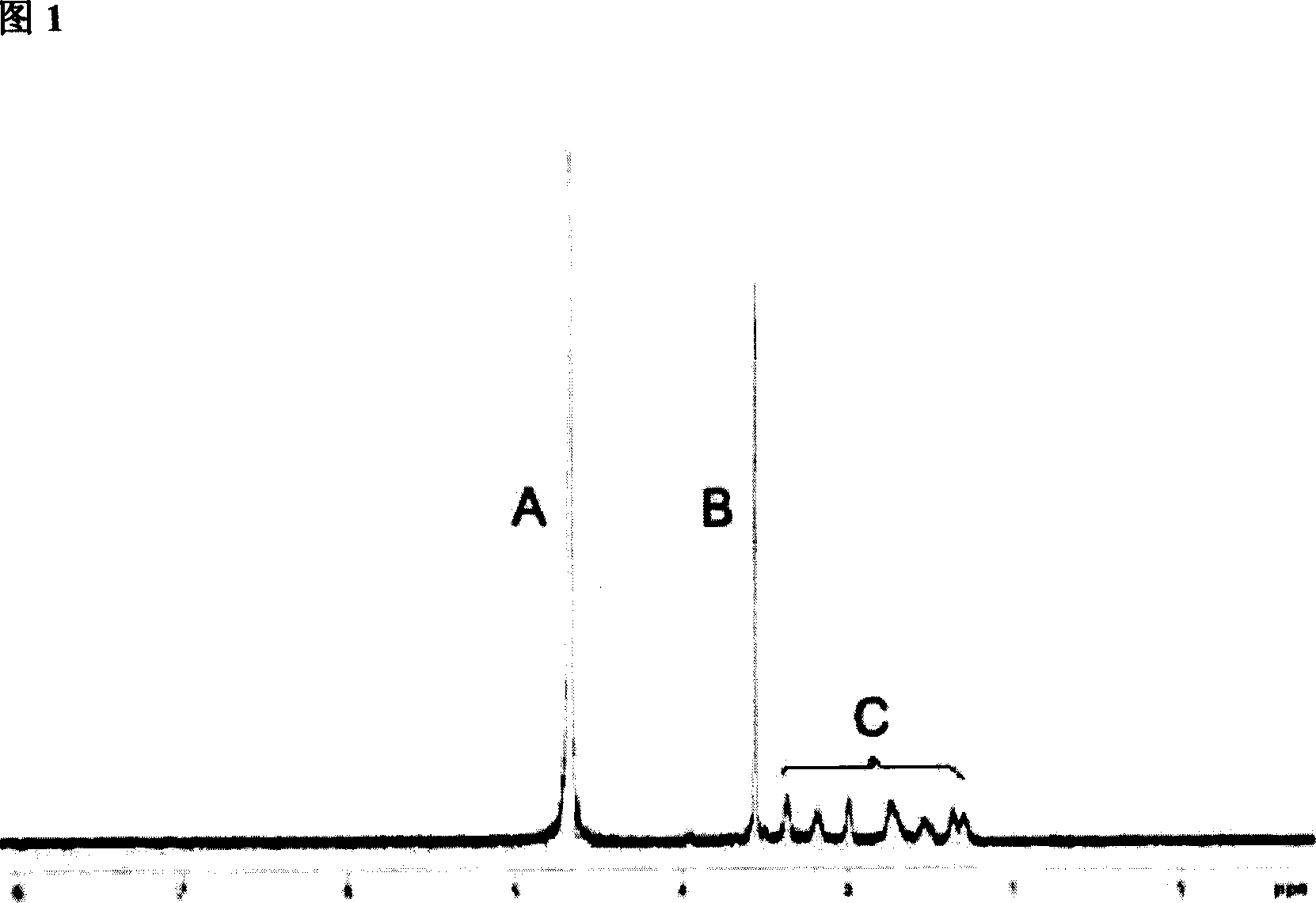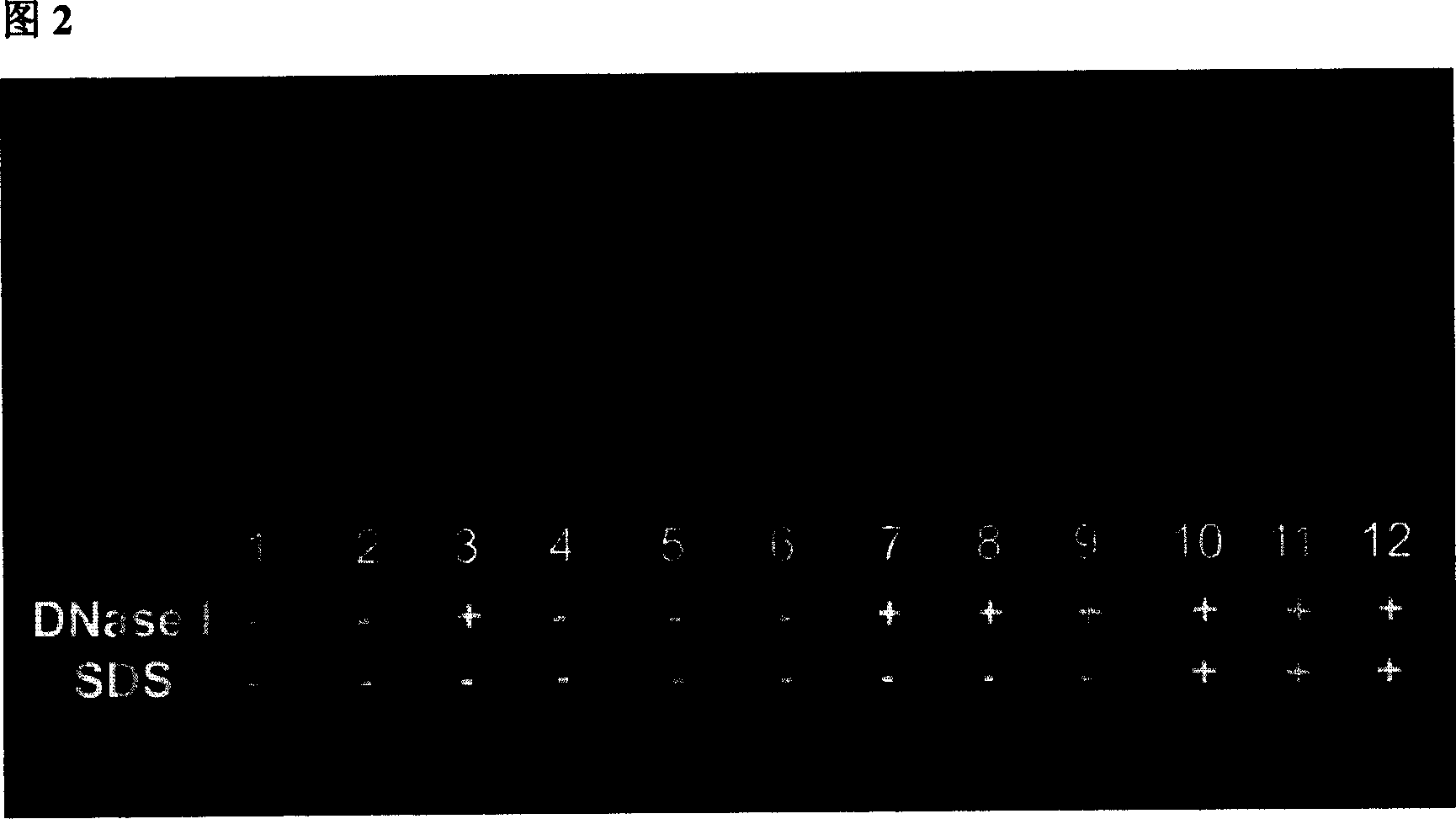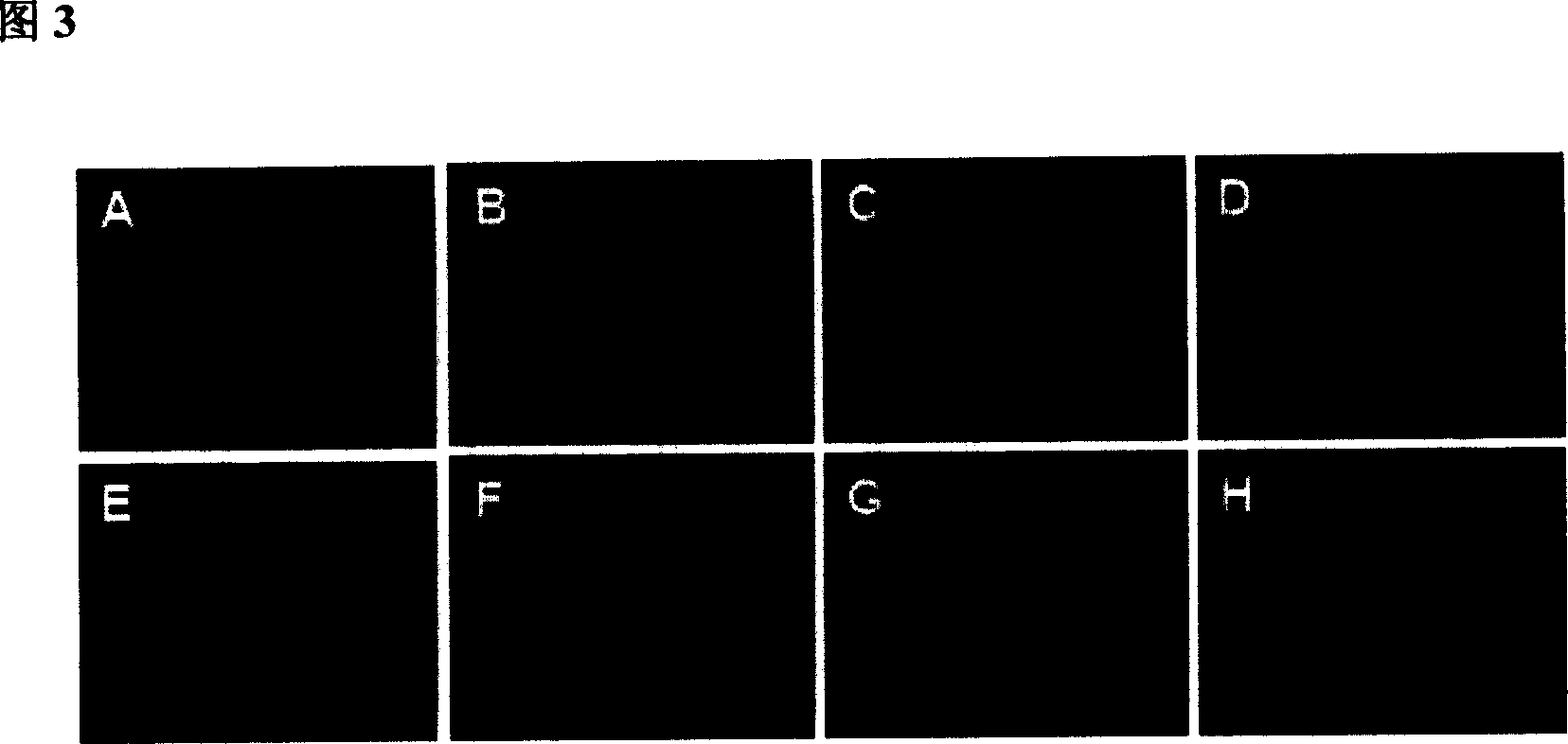Brain targeting gene transfer and release system and its prepn process
A brain-targeting and gene-based technology, applied in gene therapy, nervous system diseases, pharmaceutical formulations, etc., can solve problems such as transferrin application limitations, achieve improved brain targeting, high transfection efficiency, and improved transfection efficiency and expression level effects
- Summary
- Abstract
- Description
- Claims
- Application Information
AI Technical Summary
Problems solved by technology
Method used
Image
Examples
Embodiment 1
[0062] PAMAM and PEG containing bifunctional groups were dissolved in phosphate buffered saline (PBS) at pH 8.0 according to the molecular ratio of 1:2, stirred and reacted at room temperature for 15 minutes to generate PAMAM-PEG, and unreacted PEG was removed by ultrafiltration and replaced. The buffer was PBS pH 7.0. At the same time, lactoferrin reacted with the sulfhydryl reagent N-succinyl-S-acetylthioacetate (SATA for short) to introduce sulfhydryl groups, and after purification, it was mixed with PAMAM-PEG in a molecular ratio of 1:1, at room temperature After stirring and reacting for 12 hours, PAMAM-PEG-Lf was generated, and unreacted lactoferrin was removed by molecular exclusion chromatography to obtain PAMAM-PEG-Lf.
Embodiment 2
[0064] PAMAM and PEG containing bifunctional groups were dissolved in PBS at pH 8.0 according to the molecular ratio of 1:4, stirred at room temperature for 15 minutes to generate PAMAM-PEG, unreacted PEG was removed by ultrafiltration and the buffer was replaced with PBS at pH 7.0 . At the same time, lactoferrin reacted with the thiol reagent SATA to introduce sulfhydryl groups, and after purification, it was mixed with PAMAM-PEG in a molecular ratio of 2:1, stirred and reacted at room temperature for 12 hours to generate PAMAM-PEG-Lf, and molecular exclusion chromatography Remove unreacted lactoferrin to obtain PAMAM-PEG-Lf.
Embodiment 3
[0066] PAMAM and PEG containing bifunctional groups were dissolved in PBS at pH 8.0 according to the molecular ratio of 1:8, stirred at room temperature for 15 minutes to generate PAMAM-PEG, unreacted PEG was removed by ultrafiltration and the buffer was replaced with PBS at pH 7.0 . At the same time, lactoferrin reacted with the thiol reagent SATA to introduce sulfhydryl groups, and after purification, it was mixed with PAMAM-PEG in a molecular ratio of 4:1, stirred and reacted at room temperature for 12 hours to generate PAMAM-PEG-Lf, and molecular exclusion chromatography Remove unreacted lactoferrin to obtain PAMAM-PEG-Lf.
PUM
 Login to View More
Login to View More Abstract
Description
Claims
Application Information
 Login to View More
Login to View More - R&D
- Intellectual Property
- Life Sciences
- Materials
- Tech Scout
- Unparalleled Data Quality
- Higher Quality Content
- 60% Fewer Hallucinations
Browse by: Latest US Patents, China's latest patents, Technical Efficacy Thesaurus, Application Domain, Technology Topic, Popular Technical Reports.
© 2025 PatSnap. All rights reserved.Legal|Privacy policy|Modern Slavery Act Transparency Statement|Sitemap|About US| Contact US: help@patsnap.com



